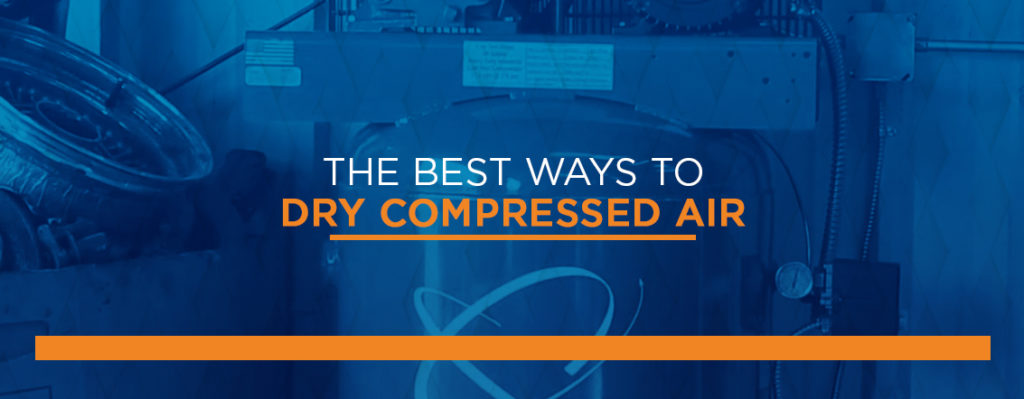
Moisture Damages Compressed Air Equipment
It’s important to understand that moisture that occurs in your compressed air can be damaging to your equipment and the tools that you are operating. Here’s how:
- Moisture blocks air control lines and can result in instrumentation malfunction.
- It damages air tools by interfering with lubrication.
- Water can directly impact processes by entering through the condensed air stream.
Air Dryers Help Alleviate the Moisture Problem in Condensed Air
It’s critical to remove moisture to protect your equipment from the above issues. Air dryers remove moisture in order to protect your air compressor and tools from corrosion. There are a lot of factors that go into which air dryer may be right for your business and industry. Whatever you choose, you’ll need to make sure it’s a quality compressed air dryer.
There are five main techniques for removing moisture from compressed air. Here’s a little bit of information on each.
- Cooling Plus Separation – When hot compressed air is cooled, it allows a large amount of water to condense. At this point, the moisture can then be separated from the air, improving the efficiency of the process and your equipment. An aftercooler or heat exchanger can help with this part of the process.
- Over Compression – This is when air is brought to a higher-pressure level than intended. It then expands to working pressure so it can be used as intended. Over compression works best with smaller air flow rates.
- Membrane Drying – This process occurs when the gas components are selectively permeated in the air to separate the water vapor. The wet compressed air is filtered through the cylinder and collects in the fibers. The dry air is able to continue through these fibers and function appropriately.
- Absorption Drying – In this process, a chemical absorption material is used to collect water vapor. The absorption material is typically sodium chloride or sulfuric acid, and can come in a solid or liquid state. This method is not as common as the other drying methods.
- Adsorption Drying – This involves using hygroscopic material to dry moist air. The materials used can include silica gel, molecular sieves and activated alumina. The most frequently used equipment is adsorption dryers, heated purge regenerated dryers, blower regenerated dryers, and heat of compression dryers.
Make Sure You Get an Air Dryer That Works for Your Business
Moisture in your compressed air lines causes critical problems. Make sure that you find an air dryer solution that works for your business. Contact us today to find out more about what air dryer can help you remove moisture from your compressed air!
